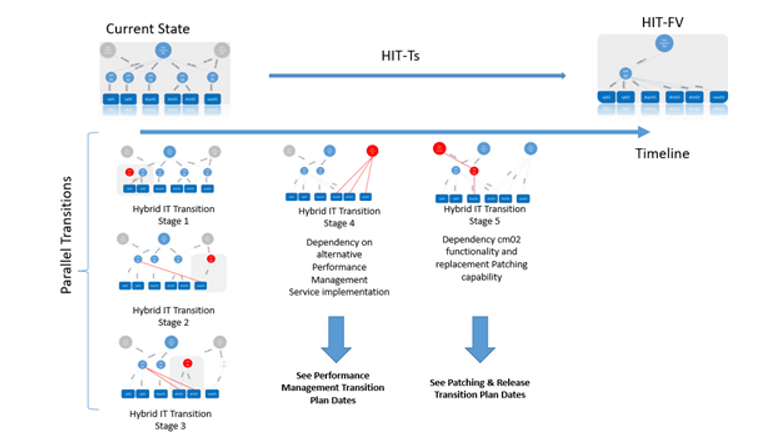Hybrid IT – Cloud Reality? (Guest blog from Fujitsu)
Author: Gary J Ellison, Chief Architect for Hybrid IT at Fujitsu
With the advent of public cloud hyperscalers, consumers focused on moving all their IT to this new deific technology, and why not? The total cost of ownership would significantly drop, you would have total control over your IT, and it's quick and easy to do everything, including getting there. All you had to do was get there!
If you’re a large, established IT enterprise you may have realised that the journey is more difficult than the advert said! The effort to take mission-critical “legacy” architectures, software, and processes and, transform to cloud-optimised services, will take significant time, money, and resources.
This realisation doesn’t really change the long term “cloud first” vision but it certainly will impact the strategy and approach. Unfortunately, some organisations, especially large, well-established enterprises, find themselves in the worst of all possible worlds where they must manage the complexity associated with getting to cloud native, yet maintain their existing “legacy” footprint. Project time pressures often mean a lift and shift, rather than a transformation approach, with minimal consumption of cloud-native components.
This is a world which can bring diversifying priorities between advancing towards cloud, while still having to sustain the “legacy” service and manage the associated technical debt. It is a world where there is a propensity for lack of control and a “the race to cloud”, with a proliferation of localised design, operational and management processes, tools, and resources. Not to mention a phenomenal increase in the number of changes like never seen before. If these enterprises employ standard enterprise frameworks such as ITIL and IT4IT, they can struggle to keep up with the pace.
Other symptoms include localised decision making with no coordination of the corporate strategy or direction, supplier and license agreements, governance, transition/transformation approaches, or development processes and resources. Often there is no overall understanding of the size, complexity and cost of migration or technical debt, ending up in an awful state of paralysis and confusion.
Our recommendation is to adopt a Hybrid IT strategy.
If you are experiencing any of these symptoms, then the treatment is to reassess your ambitions and reset your thinking. This means readjusting the roadmaps accordingly to accommodate and optimise design, operational and management processes, multi-environmental, multi-platform enterprise, not a cloud only one. This Hybrid approach delivers a single set of people, process, and technology across all environments.
Once there is an acceptance that a hybrid state will exist for the foreseeable future the enterprise can focus on the most efficient way of rationalising tools and processes across that estate to centralise and optimise the processes to achieve a continuity of control change, across the enterprise estate always with the hybrid vision as the target objective.
There is no magic elixir to fixing this, just good clear logical control of the organisation and processes applying this new perspective. The starting point should be based on the organisation's immediate pain points. For example, if you don’t have a true single understanding of your enterprise then start with configuration management. Decide on the preferred future tool and associated process. After agreeing the Hybrid design, the activities can be broken down into more manageable stages of change (Hybrid IT transitions – HIT-T). The Hybrid IT mandated rule though is that people, process, and technology must be consistent across all platforms, they must all align with the journey towards Hybrid IT Future Vision (HIT-FV). In the below example, the current state shows multiple configuration management (CM) processes & tools used for various platforms, migrating to a single, desired CM approach. The roadmap sets out the approach of staging a progressive change.

Now, imagine this approach is applied to all areas of Hybrid IT change for technology, processes and people – all coordinated, all controlled and all with the objective of optimising the enterprise to the most effective, efficient outcome. Is the light at the end of the “cloud only” tunnel, the acknowledgement of reality?
Summary
A good hybrid strategy ensures a common set of people, process, and technology across all cloud and on-premises environments. By taking this approach a high degree of efficacy will enable optimised total cost of ownership.
Fujitsu‘s Hybrid IT framework has a set of guidance, tools and techniques to help enterprise’s map, understand, and accelerate their hybrid IT strategic and roadmap journey.
Cloud Week 2023
News, views and insights on how cloud computing continues to reshape how we live and work. techUK's annual Cloud Week is an opportunity for the tech community to explore key issues in cloud and highlight new ideas and thought leadership from our members.

